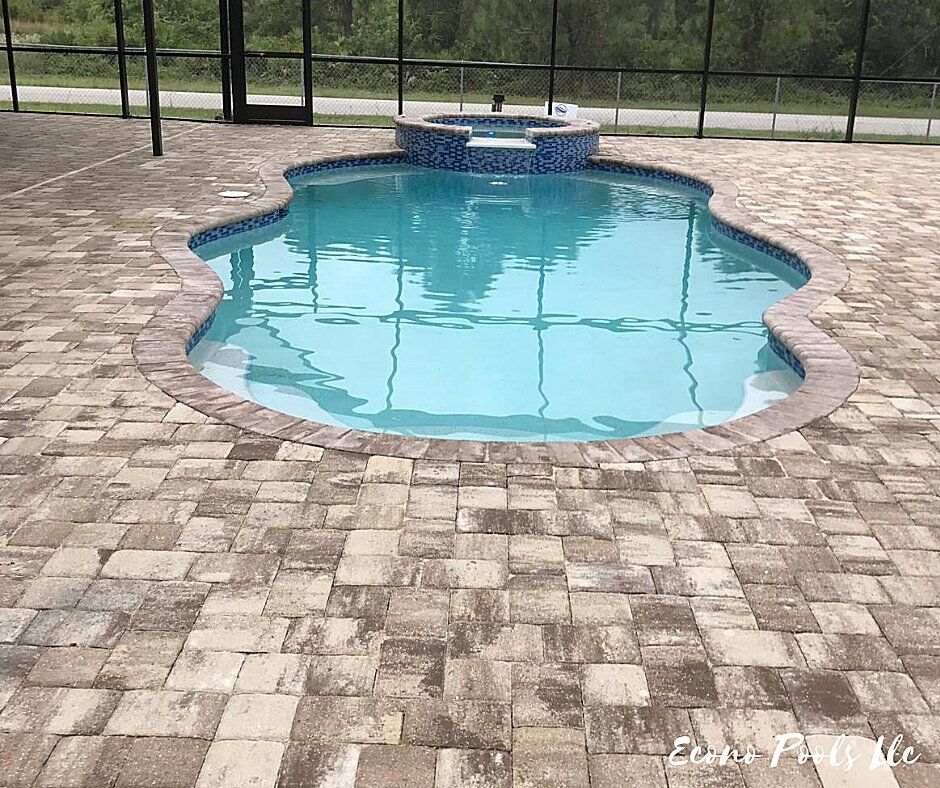QUALITY POOL REPAIRS

Quality Pool Repairs
Maintaining your swimming pool’s efficiency and longevity involves regular attention to its mechanical components, structural integrity, and water quality systems. Beyond the pool pump and external piping, other elements like filters, heaters, skimmers, and the pool surface play vital roles in water circulation, filtration, heating, and overall pool health. Understanding common issues across these systems and their remedies can help ensure a safe, clean, and enjoyable swimming environment. Below, we explore an expanded list of repair areas, including pump and piping issues, to provide a complete guide to pool maintenance and repair.
Common Pool Pump Issues and Repair Solutions
The pool pump is the heart of the circulation system, and addressing its problems promptly is essential:
- Noisy Operation: Unusual sounds like grinding or screeching often indicate worn-out bearings or debris inside the pump. Regular maintenance, such as lubricating bearings (if applicable) and replacing worn parts, can prevent further damage and restore quiet operation.
- Leaks: Water leaking from the pump may stem from deteriorated seals, O-rings, or cracked housings. Inspecting and replacing these components as needed maintains efficiency and prevents water loss.
- Failure to Start: A pump that won’t turn on could signal electrical issues—tripped breakers, blown fuses, or a faulty capacitor. Routine checks of electrical connections and components, along with professional troubleshooting, can resolve these failures.
- Air in the System: Air entering the pump can disrupt priming and reduce circulation, often due to suction-side leaks or a loose pump lid. Ensuring airtight seals and checking the water level at the skimmer can fix this issue.
Common External Piping Issues and Reair Solutions
External piping connects the pool’s components, and its integrity is crucial for efficient water flow:
- Clogs and Blockages: Debris like leaves or dirt can accumulate in pipes, restricting flow and straining the filtration system. Regular cleaning with a plumber’s snake or high-pressure water, plus installing strainers, prevents blockages.
- Leaks in Plumbing: Cracks, loose fittings, or corroded pipes lead to water loss and reduced pressure. Routine inspections, followed by patching small leaks with epoxy or replacing damaged sections, maintain system integrity.
- Pressure Variations: High or low pressure may indicate clogged pipes, air leaks, or pump issues. Monitoring pressure gauges and addressing root causes—like cleaning pipes or sealing leaks—prevents escalation.
Common Pool Filter Issues and Repair Solutions
Filters remove debris and contaminants from pool water, and their maintenance is vital for clarity and hygiene:
- Clogged Filter: Sand, cartridge, or diatomaceous earth (DE) filters can become blocked with dirt, reducing flow and increasing pump strain. Regular backwashing (for sand/DE) or rinsing (for cartridges) restores performance; replace media every 3-5 years as needed.
- Leaks: Cracks in the filter tank or worn O-rings can cause water or DE powder to escape. Inspecting and replacing seals or patching small cracks with sealant resolves minor leaks, while severe damage may require a new filter.
- Inefficient Filtration: Cloudy Despiteing pump, may indCloudy water icate a filter needs repair or replacement. Checking for worn grids (DE), torn cartridges, or compacted sand, followed by appropriate fixes, ensures clean water.
- Pressure Build-Up: Excess pressure in the filter (e.g., >10 psi above normal) suggests clogs or valve issues. Cleaning the filter and inspecting the multiport valve for blockages or damage corrects this.
Common Pool Heater Issues and Repair Solutions
Pool heaters extend swimming seasons, but malfunctions can disrupt comfort:
- Failure to Heat: A heater that won’t warm the water may have a faulty thermostat, pilot light (gas heaters), or heating element (electric). Testing and replacing these components, along with ensuring proper gas/electric supply, restores function.
- Leaks: Corrosion or cracked heat exchangers can leak water. Professional inspection and repair—often replacing the exchanger—are necessary to prevent water loss and inefficiency.
- Strange Noises: Rattling or banging in gas heaters may indicate scale buildup or burner issues. Descaling with a vinegar solution or cleaning the burners resolves noise and improves efficiency.
- Low Flow: Reduced water flow through the heater, often from clogged pipes or a dirty filter, prevents proper heating. Clearing blockages and maintaining the filtration system fixes this issue.
Common Pool Surface and Structural Issues and Repair Solutions
The pool’s interior surface and surrounding structure affect both aesthetics and safety:
- Cracks in Plaster or Concrete: Hairline cracks or larger fissures in plaster, concrete, or gunite pools can worsen, leading to leaks or rough surfaces. Small cracks can be patched with pool-grade epoxy or plaster, while extensive damage may require resurfacing.
- Tile Damage: Cracked, loose, or missing tiles around the pool’s edge compromise appearance and safety. Replacing individual tiles with waterproof adhesive or retiling sections restores integrity.
- Staining and Discoloration: Mineral deposits, algae, or rust can stain surfaces. Chemical treatments (e.g., ascorbic acid for metal stains, chlorine shock for algae) or scrubbing with a pumice stone remove stains; persistent issues may need professional acid washing.
- Peeling Paint or Coating: In painted pools, flaking epoxy or fiberglass coatings expose rough surfaces. Sanding and recoating with pool-specific paint prevent further deterioration.
Common Skimmer and Drain Issues and Repair Solutions
Skimmers and drains manage water intake and debris removal, which are critical for circulation:
- Clogged Skimmer: Leaves, hair, or small objects can block the skimmer basket, reducing water flow to the pump. Regular emptying and cleaning of the basket prevent this issue.
- Leaking Skimmer: Cracks in the skimmer body or loose weir doors can leak water or air into the system. Sealing cracks with epoxy or replacing damaged skimmers corrects leaks.
- Main Drain Malfunction: A clogged or broken main drain impairs circulation and poses safety risks (e.g., suction entrapment). Clearing debris with a drain brush or replacing faulty covers ensures proper function.
- Weir Door Failure: The flap (weir) in the skimmer sticking or breaking allows debris to backflow. Replacing the door restores skimming efficiency.
Common Pool Cleaner Issues and Solutions
Automatic pool cleaners (e.g., robotic, suction, pressure) maintain cleanliness but can malfunction:
- Failure to Move: Suction cleaners may stop due to low pump flow or blockages; robotic cleaners may have motor issues. Checking hoses for clogs, ensuring adequate pressure, or repairing motors resolves this.
- Ineffective Cleaning: Worn brushes, torn bags, or clogged filters reduce efficiency. Replacing worn parts and cleaning filters restores performance.
- Leaks in Hoses: Cracked or loose cleaner hoses waste water and suction. Patching small holes or replacing hoses maintains operation.
Ensuring Quality Repairs
Addressing these diverse issues promptly with quality repairs is essential to maintaining a safe and enjoyable swimming environment. Regular maintenance—monitoring chemical levels (pH 7.2-7.8, chlorine 1-3 ppm), cleaning filters, inspecting structural components, and testing equipment—prevents many problems from escalating. When repairs are needed, engaging experienced professionals ensures effective resolutions, preserving the pool’s integrity and extending its lifespan. DIY fixes (e.g., patching small leaks or cleaning filters) can handle minor issues, but complex repairs like heater exchanger replacements or pump motor overhauls benefit from expert skills and tools.
Conclusion
By proactively managing the maintenance and repair of your pool’s pump, external piping, filters, heaters, surfaces, skimmers, drains, and cleaners, you can ensure a safe, efficient, and enjoyable swimming experience. Each component plays a unique role in pool health, and understanding their common issues—whether it’s a noisy pump, cracked tile, or clogged skimmer—empowers you to act swiftly. With regular care and timely interventions, your pool will remain a reliable source of relaxation and fun for years to come.
